The CVT Patents
The Self-adaptable, Positive Motion Continuously Variable Transmission
This self-adaptable, positive motion continuously variable transmission (CVT) is able to transmit power by way of engagement, such that the coupling between the power transmission mechanism and the conical disk is more stable than the conventional friction CVT. Traditional CVTs use chain-based friction transmission to achieve continuous power transmission by adjusting the spacing of the pulley discs. However, friction transmission efficiency is lower, and it cannot achieve high torque output. The patent includes two types of positive motion transmission designs: chain-based and ring-based. Thus, the continuously variable transmission is competitive in high torsion application.
- US Invention Patent 10030745 B2
- Taiwan Invention Patent I580876, Licence
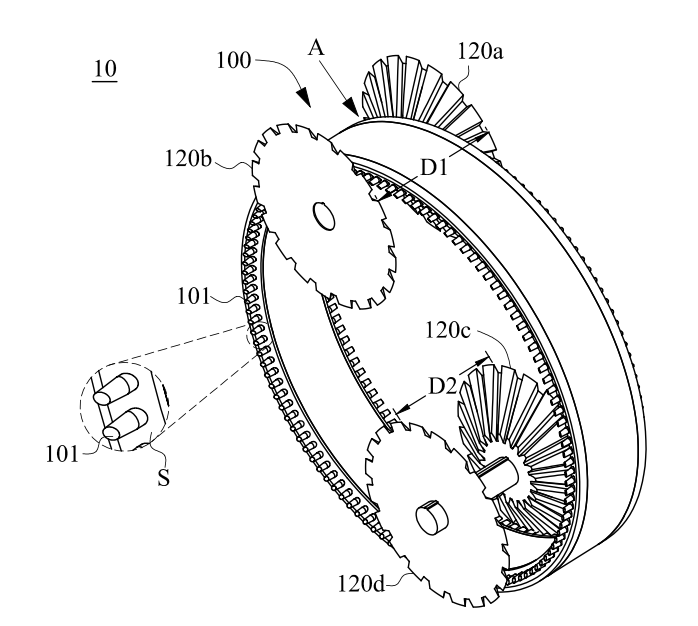
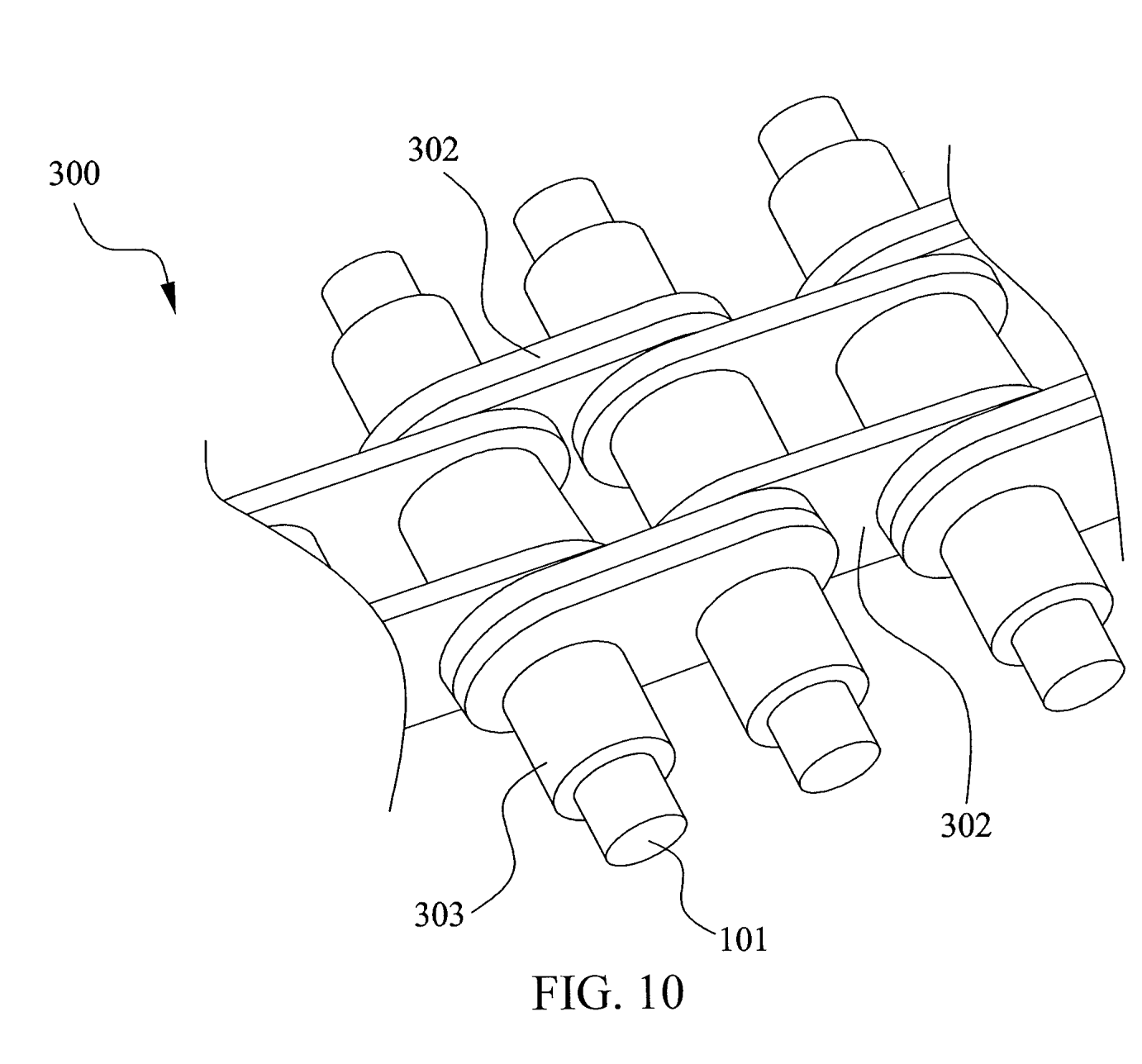
▲ The ring-based design (left) and the chain-based design (right).(Click to enlarge)
Early stages of design evolution
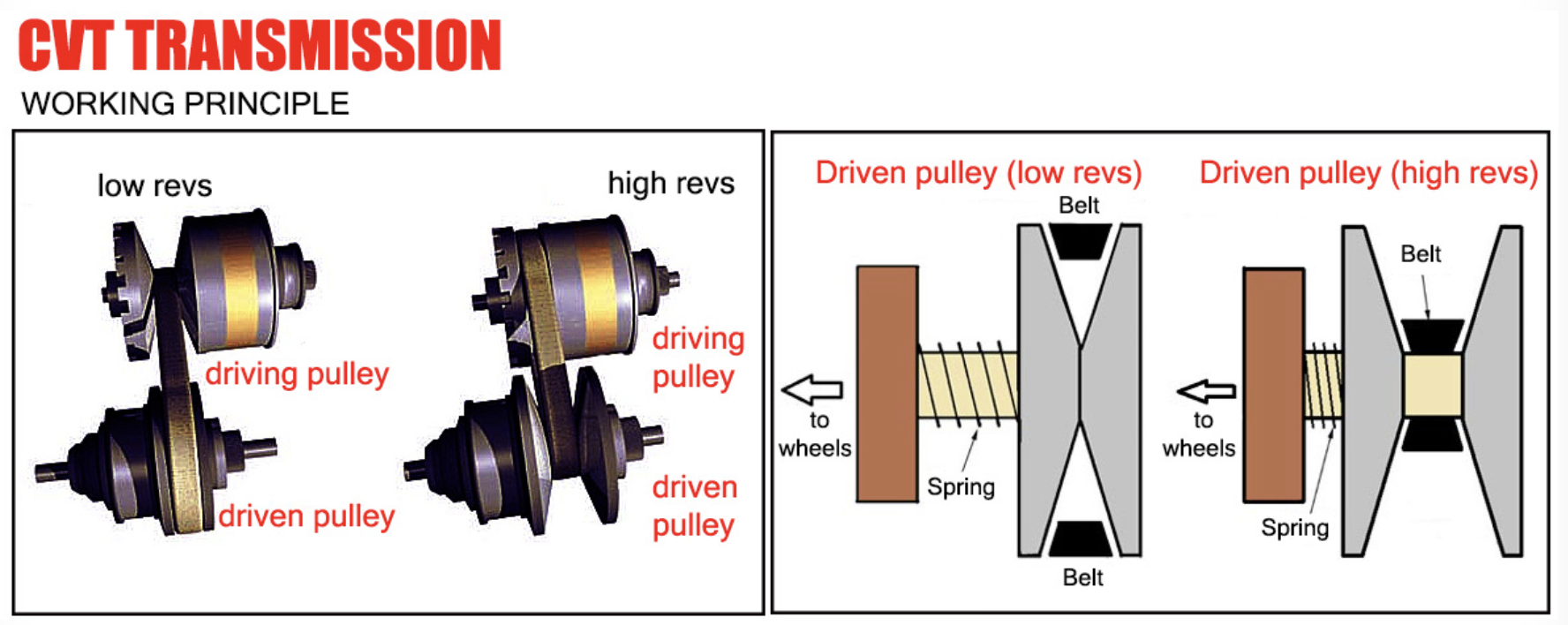
▲ Conventional CVTs rely on friction to vary the gear ratio.(Click to enlarge)
Ref.
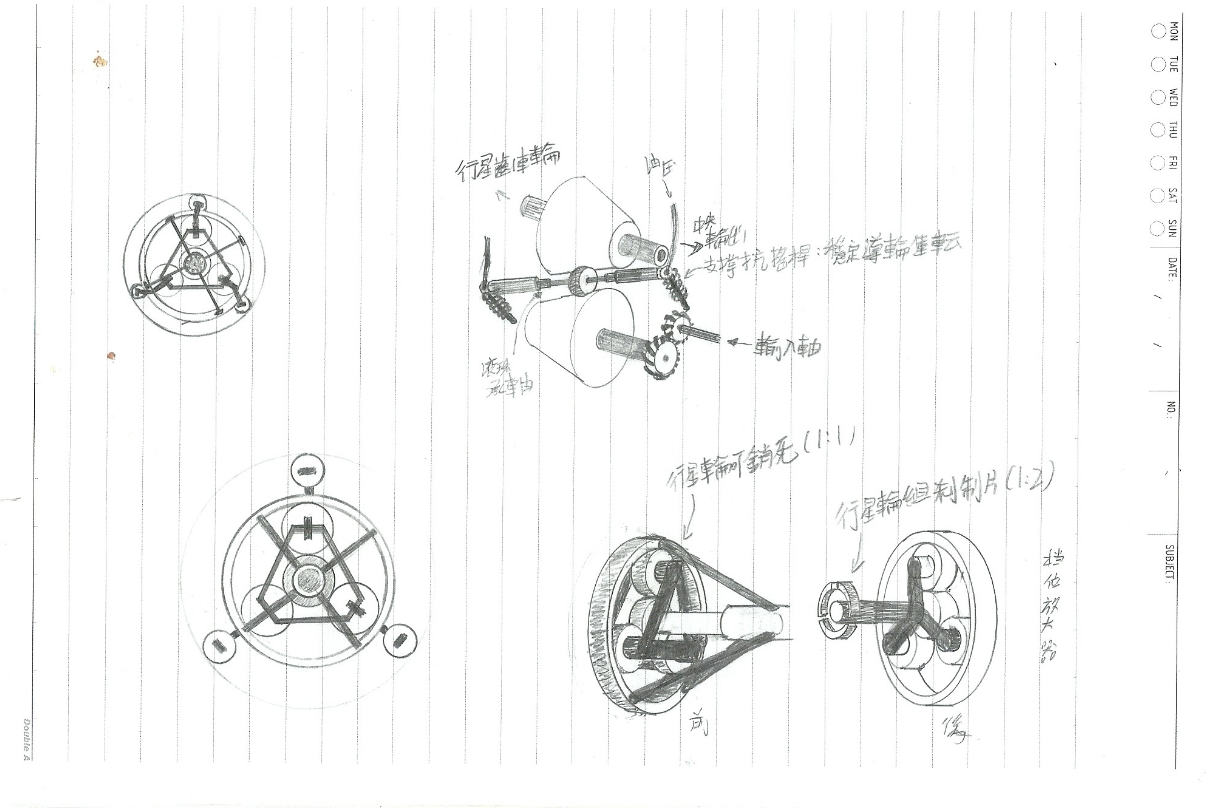
▲ When I was in junior high school, I was fascinated by CVT technology and tried sketching some ideas for CVTs(2008).(Click to enlarge)
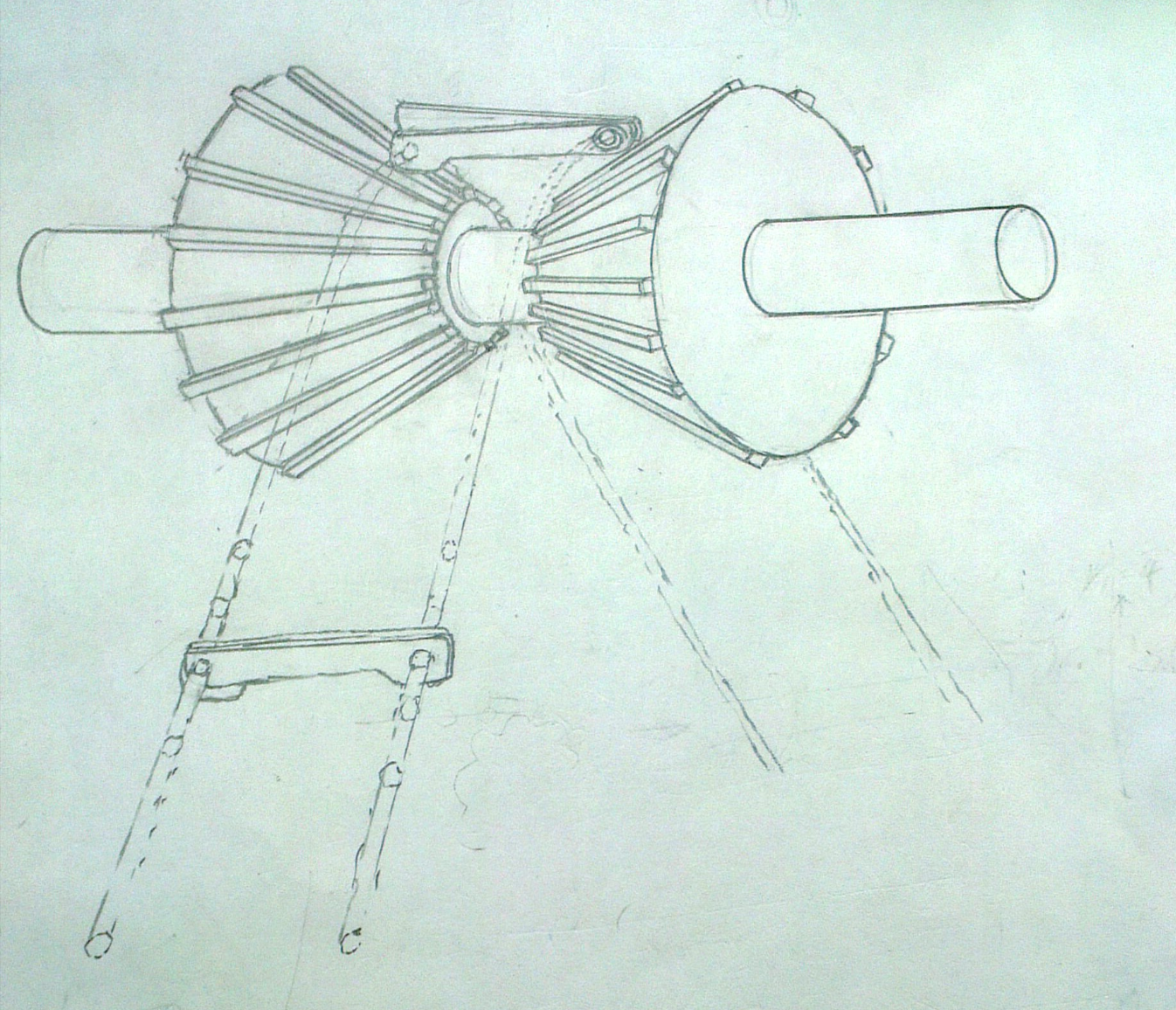
▲ I have been pondering how to incorporate positive motion transmission into CVT. This idea first occurred to me during my first year in college (2013), when I conceived the self-adaptable chain-based design.(Click to enlarge)
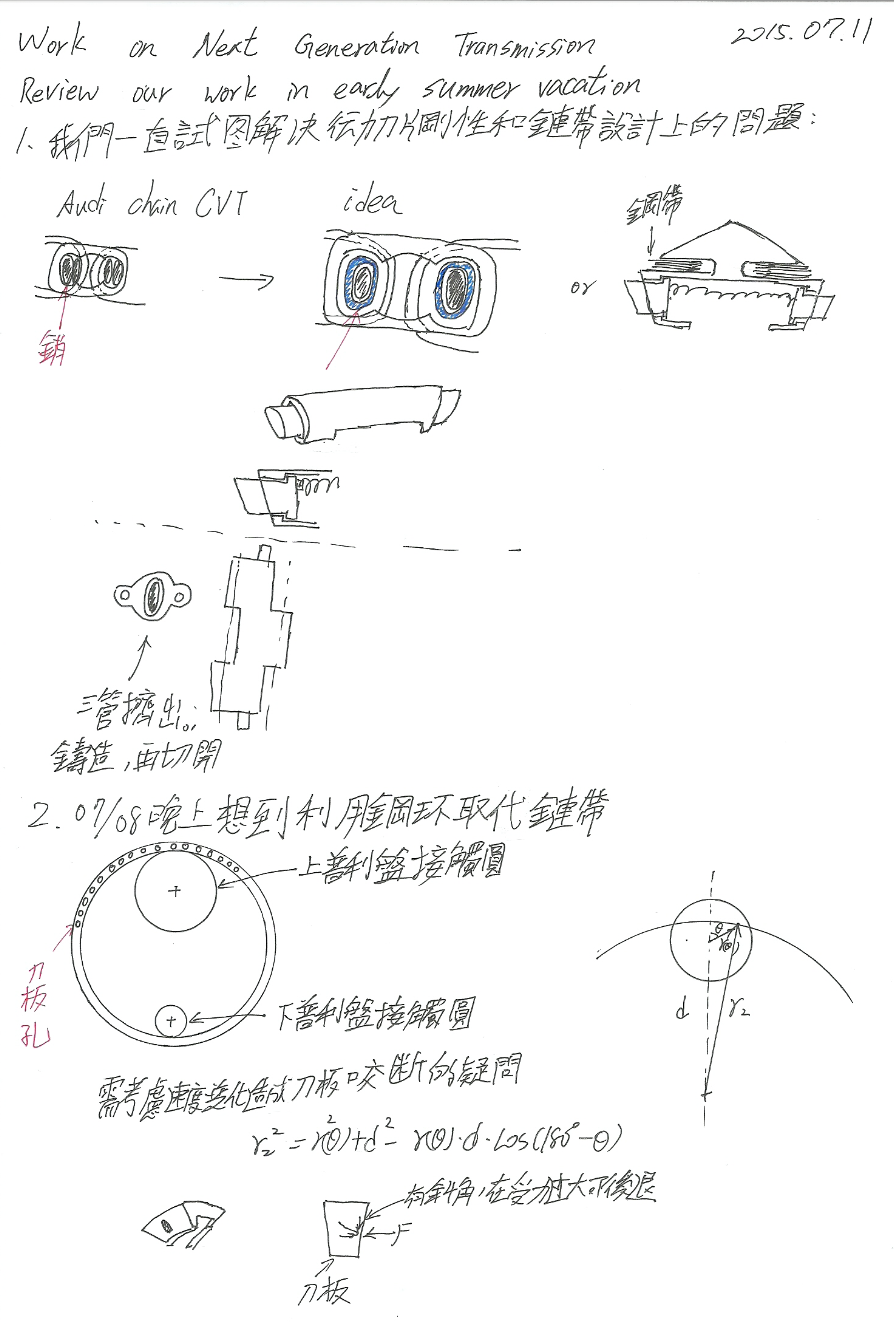
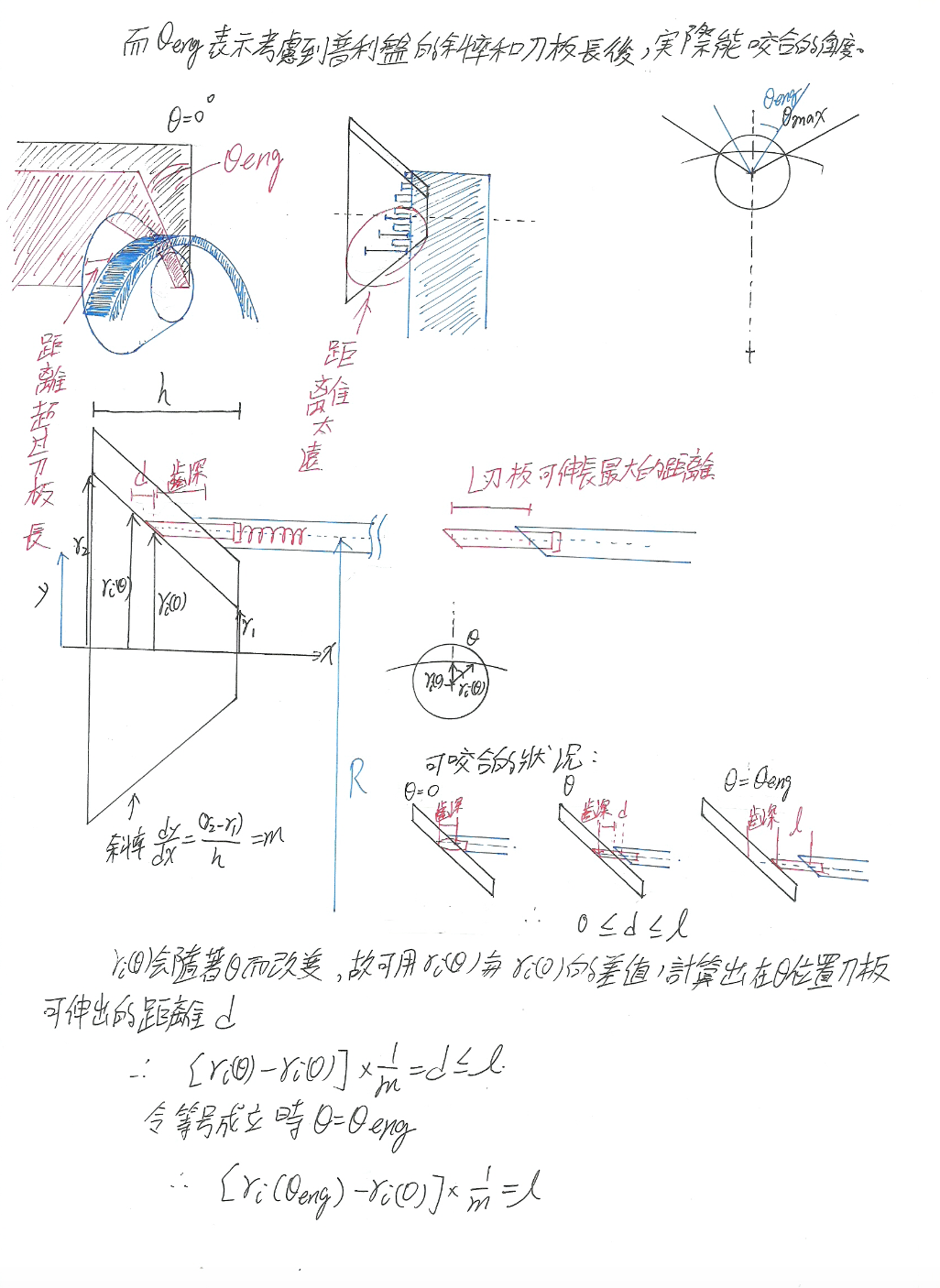
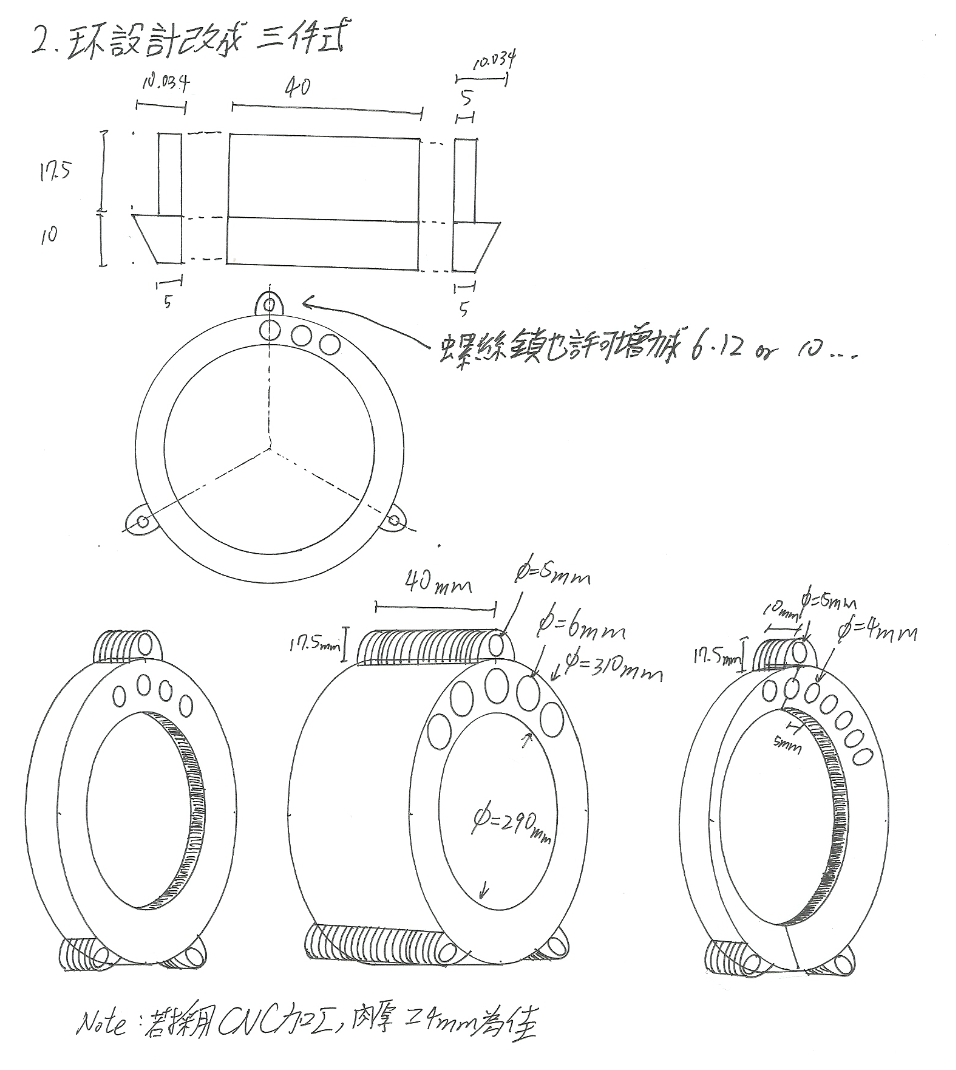
▲Refinement of the design. Considering the structural weakness of the chain-based design led to the introduction of the ring-based design.(Click to enlarge)
Originally written in Chinese by the author, these articles are translated into English to invite cross-language resonance.
 Peir-Ru Wang
Peir-Ru Wang